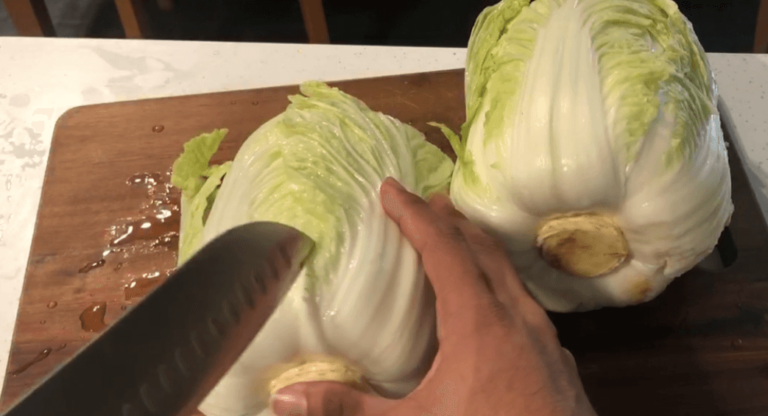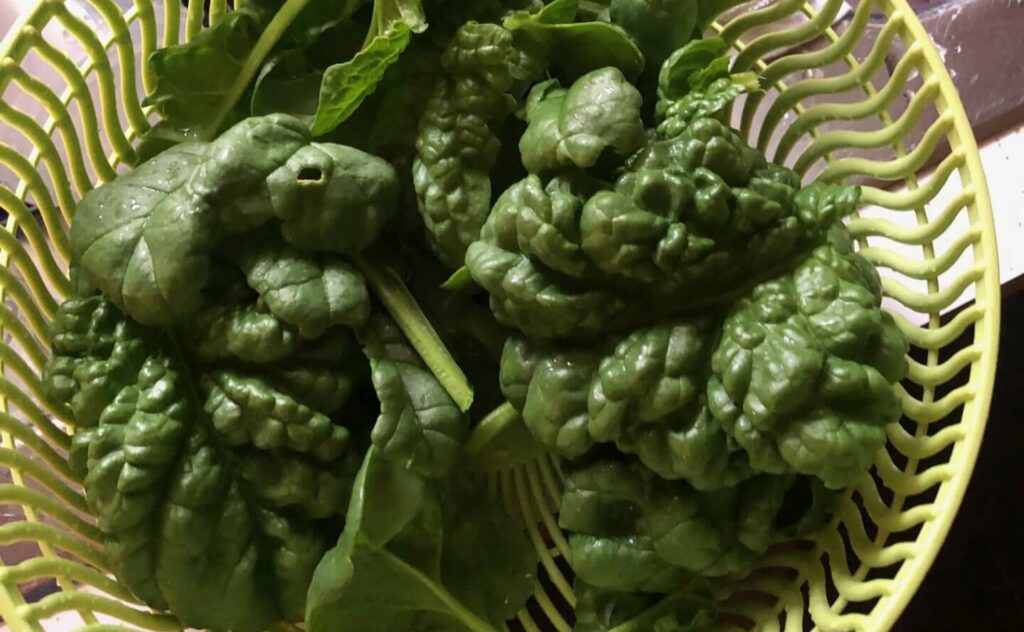Introduction
The seasons have officially changed. It is now common to see grass changing colors from yellow to green (depending on species), birds are finally returning and life seems to be waking from its winter dormancy. I have even seen some honeybees make their debut to start the season by visiting some small dandelion flowers in my backyard. For gardeners, now is the time when one begins to see what type of gardener they are, often distinguishing if it is a “hobby” or a lifestyle. For me, here in zone 6b March is the perfect time to directly sow some of my favorite early spring crops.
Many of these crops will grow into the heat, but may not survive if they are not established already or try to bolt (go to seed) if temperatures are too hot. March is a time where one is already planting or transplanting plants or starting warmer vegies inside depending on the type of plant. If you are curious on how to plant various types of plants in your garden then I encourage you to consider checking out both my blog and recent YouTube video describing how I make a simple garden plan. I include great tips and tricks while highlighting some things to consider so that you can prevent common mistakes often made by new gardeners.
Some plants and varieties are more forgiving when planting in early spring while others are not. I have had issues with growing certain vegetables in early spring due to planting too late, abnormally warm weather, pest damage, etc. Point being that though many of the plants you typically plant in early-mid March are indeed strong and easy to grow, do not feel discouraged if some die or are not as productive as you hoped for as this is normal. You have to adapt your growing style/methods to best fit your environment and growing preference. It is common knowledge that we learn the best through experience, although it is uncomfortable for all parties involved. This is how you become a better gardener. It is a lesson that translates throughout almost all avenues in one’s life.
Now that I have instilled in you a sense of encouragement and proposed to you a bit of modesty in regards to what to expect in the garden I will list some of the crops that are ideal to plant in March. Many of which I personally have struggled growing, but I tend to do things the most difficult way and often plant all of my plants from seed, which seems to work in most, but not all cases so do understand that before going in. It should be known that there are more than 5 types of vegetables to plant in March for zone 6b but here are 5 to start. These plants include cabbage, potatoes, onions, carrots and peas. I tried my best to only list one vegetable per plant family. Please let me know if you are interested in seeing more!
1. Cabbage
For those who are unaware, cabbage is a member of the brassica family. It is the same exact species as cauliflower, broccoli, Brussel sprouts, kale, and kohlrabi (Brassica oleracea). Many do not believe me when I say this, but I encourage you to look it up. All of these plants can be started in March (in zone 6b), but I specifically wanted to include cabbage because of my personal love for the vegetable. Many are unaware that cabbage can store for months in proper root cellar/storage conditions. Cabbage comes in many different sizes, shapes and varieties.
Cabbage is often grown for the purpose of fresh eating in soups, stews, or sautéed, but it is also commonly fermented for an even longer shelf-life and potentially significant health boost in regards to probiotics/prebiotics. Check out my blog on the topic of fermentation or my YouTube video showing how I made 8 lbs of fermented kimchi.
People purchase plants grown at local nurseries and directly plant or directly sow. In the past I had trouble getting my cabbage/broccoli plants to establish and take off before it got too warm for them. These plants are more cold hardy than heat tolerant in the beginning, but is seems to be a bit of a balancing act in regards to picking the perfect temperature for them to grown and establish. Do be aware that the cabbage moth caterpillar can be an issue with certain variety and can be mitigated with the use of fine mesh garden netting or the use of various organic pesticide sprays such as a BT spray which uses a bacteria to help kill of the insects.
A more ecological method to help reduce pests would be to increase native plant biodiversity and promote the habitat of various predatory insects which usually help naturally keep pest populations down a bit though they are far from perfect. This year I am growing an Asian style of cabbage known as Hilton.

2. Potatoes
Another crop that I have a lot of interest in growing is potatoes (Solanum tuberosum). I mean who doesn’t love a good potato? They complement almost any dish and come in various shapes, colors, and forms. There are so many different potato varieties that they practically can be grown in any hospitable place on Earth. I have written so much on the topic of potatoes lately, that it seems I may be kicking a dead horse. I assure you that there is much to be said on the humble potato and all that it beholds.
Now as I mentioned previously potatoes come in a diverse array of varieties, but are similar to tomatoes in the sense that there are varieties that are determinate and indeterminate. Determinate potato varieties usually have a predetermined amount of potatoes that they will generate at once and then die. Once the tops are dead there isn’t typically much more growth that will occur. Indeterminate varieties will grow all season and have the potential to generate a greater yield due to their longer growing season.
There is a lot of information on potatoes so if you are curious on how to grow your own potatoes and don’t know where to start please consider checking out my recent blog post on the subject which will be giving you all the information I possess currently. Before moving on I do want to point out that if you are growing potatoes with the intent to stack up food to bolster your pantry/root cellar do know that different varieties are better at different things. Some varieties store better long term in proper conditions so please keep that in mind.
3. Onions
This next vegetable is one that personally has been leading me on a goose chase, that vegetable being onions (Allium cepa). Onions are often overlooked by the casual gardener as they are plentiful at the store, don’t cost a lot, and typically can be bought in bulk and saved in the pantry for quite some time. These benefits remove a lot of the incentives to grow them yourself. Personally, I feel that home grown onions are much fresher and stronger than that of store bought onions. I have grown onions ¼ of the size of onions sold at the store that still had more potency when in comparison. Personally, a dish with strong onion tends to taste better for me and my family, but others may have different preferences.
Onions come in many varieties ranging from white to yellow onions. Do pay attention as some are best suited for certain growing zones while others may be more adapted for colder or warmer climates. It does pay off to do research and know if a variety does best when grown from bulbs or by seed. I tend to try and grow my onions from seed, but typically fail somewhere along the way. I do manage to grow bulbs, but mine tend to only be about the size of a golf ball by the time the outer skins have browned.
Onions require a certain amount of sun hours to produce a hefty bulb, so as I emphasized above it does pay off to know about the differences in varieties before making a purchase.
4. Carrots

Carrots (Daucus carota) are one of those things that everyone kind of take for granted. It may seem simple enough to buy carrot seeds, plant them, and wait for them to grow, but I assure you they need a bit more care than initially thought. Don’t get me wrong, carrots are not difficult to grow, but to grow giant, sweet tasting carrots at home doesn’t typically occur all that often nor does it happen overnight. I only recently learned how to grow big carrots. The secret is a nutrient rich, loamy soil, good spacing, and patience. For extra sweetness it helps to harvest after a freeze or before it gets too hot as this can make more bitter carrots.
When planting carrots do make sure to keep the seeds covered and moist for a week or two so that they don’t dry out, if that happens the seedling will die and nothing will sprout. I like to check the soil around where I planted my carrots every other day to make sure it isn’t super dry. Once the seedlings emerge it is beneficial to thin out the carrots so that they may grow bigger more quickly and not compete with their neighbors for precious nutrients/resources.
Grow your first “supermarket” sized carrot is always an exciting feeling. Sometimes it is hard to guess what size carrot you grew based on the top diameter. It definitely takes a little trial and error, but with some practice you will master this veggie in no time. Carrots can also store for a long time in the root cellar or in the fridge as we all know, just make sure to cut the tops off before storing and consider keeping them in a plastic bag if keeping them in the fridge to help keep moisture in the carrots.
5. Peas
Another great plant to add to your early spring garden is snow peas (Pisum sativum)! Snow peas are a legume and can help add a little nitrogen back to the soil via nitrogen fixing bacteria. When eaten fresh the pods are sweet and delicious in salads and stir fries. These guys also like to climb so you will have to break out the trellis for them. Once established they will keep producing until about midsummer depending on the individual plant, pest, and overall temperature of the area. Don’t let the pods grow too long as they will become fiberous and the peas will become less sweet and more hard.
Many people don’t really consider how tasty pea plants are and their ability to generate a large amount of peas for every plant. It does take some time to get them started, but once they are started then I can assure you that you will not be super disappointed.
Conclusion
As you may now know, there are many different kinds of vegetable to plant in early many of which are relatively easy to plant and can generate a relatively high amount of food from one tiny seed. I encourage anyone reading to go ahead and try their hand at growing any of the previously mentioned vegetables and give it a chance in your garden. I hope you gained all the information one needs to fully gain a grasp on the basics to growing some of these vegetables despite this being a relatively quick summary in regards to how/what to grow and how people tend to use them. Everything you need to become a succesful gardner is online! That is how I learned and how I hope to teach people in the future. Now, go get your hands in some dirt!
